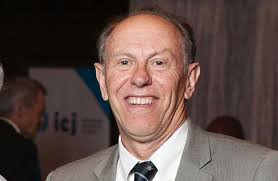
Media development in Zimbabwe requires a holistic approach, alive to the gains accrued thus far and complex enough to connect the scattered dots through an outward-looking strategy responsive to the evolving needs of the media development ecosystem.
The gains that have been scored since the explicit constitutional guarantees that provide for media freedom, freedom of expression, access to information and the right to privacy, which came into effect with the dawn of the new charter a decade ago are instructive of the need to remain engaged on the reforms agenda.
Since then, the gains have been incremental, which include but are not limited to the repeal of the infamous Access to Information Protection of Privacy Act (AIPPA), replaced by the progressive Freedom of Information Act (2020); the broadening of access to information through post-cabinet media briefs; the licensing of new players in private, commercial and campus broadcasting; shift by the Ministry of Information and broadcasting authority from the attitude of antagonism to open door policy and a responsive media policy engagement process through the Media – Police Action Plan appended in 2016 under the leadership of Misa Zimbabwe among others.
Post the elections, the gains accrued can be gradually lost if there is limited scope in understanding the work beyond the plebiscite.
I, therefore, seek to connect the dots. Hopefully, the media stakeholders, development partners and the government will remain engaged in a connecting-the-dots mindset in attending to these moving targets.
The shifts in geopolitics and reconfiguration of the global order have seen a rise of right-wing thinking that is inward-looking and seeing issues in silos. This sad situation builds a sense of turf mindset and entrenched positions rather than a collective sense of responsibility and working together for the collective good of all.
Governments, development partners, and civil society have become inward-looking and narrow-minded. When everyone is inward-looking, humanity is at its most vulnerable position.
The gains scored in the Zimbabwean context reflect the collective ownership and responsibility in moving the needle on the media development questions.
- Chamisa under fire over US$120K donation
- Mavhunga puts DeMbare into Chibuku quarterfinals
- Pension funds bet on Cabora Bassa oilfields
- Councils defy govt fire tender directive
Keep Reading
Instead of opting for easy options of being inward-looking and acting in silos, there is a need to move to the centre and advance a collective cause of media reforms that are outward looking and reflect a better society that is in sync with other progressive league of nations in the region, continentally and at global scale.
If there is one outstanding issue about Zimbabwe’s media regulatory, which stands out like a sore thumb in the region, it is that it is highly fragmented! This is paradoxical as it attempts to regulate a highly converged industry.
The sector is governed, for example, through a chain of statutory regulatory bodies, notably The Postal and Telecommunication Regulatory Authority of Zimbabwe (Potra), the Broadcasting; Regulatory Authority of Zimbabwe (BAZ); the signal carrier, Transmedia, Zimbabwe Media Commission (ZMC), which is a constitutional commission and the Censorship Board among others.
Yet the nature of the communication ecosystem in Zimbabwe, the region and the global stage are highly converged.
This entails that the regulation mechanisms in the country are playing catch up to the practises, thereby simply reducing them to duplicitous acts, hindrances to sector growth and outright redundancy.
In connecting the dots, there is an opportunity to synchronise the regulatory regime through convergence and collapse the multiple regulatory agencies under one roof for efficacy, effectiveness, and responsiveness to evolving needs.
Developments in information technologies are now revolutionising entire facets of life through advances in AI, which requires agility in the government playing a facilitatory role in responsive communication ecosystems in Zimbabwe that speak to the broader league of nations that have since embraced the same.
The government of Zimbabwe has been pitching its strategy on the “whole of government approach”, which is predicated on the government being calibrated into a service delivery machinery.
Suppose there is any semblance of this happening. In that case, it must start playing out in the convergence of communications systems anchored on a healthy mix of online and offline communication approaches. You can't be a fragmented centre and yet yearn to be relevant in regulating converged services.
Wither media development in Zimbabwe?
The media development in Zimbabwe needs to drift towards an ecosystem approach instead of siloed and sporadic activity-centred interventions.
An ecosystem approach takes the holistic approach in attending towards the levelling up of the key strategic pillars of the development process by tacking the following key issues:
- Media viability and sustainability: In this age of information disorders, the media remains a credible source of verified information. However, there is a general expectation that the media must miraculously remain the benchmark of churning out credible information and being a source of checks and balances without any support. Emerging from the deadly global COVID-19 pandemic and exposure to fast-paced changes in technology, which has altered business models, the media face the challenge of remaining afloat in line with expectations from the world that it must continue to public good and service. This is further exacerbated by the audiences' low levels of trust in the media and the absence of credible regular audience surveys to better connect the media to its audiences.
- Media law and policy reforms: There are gains already articulated earlier, hence the need for the deepening of reforms to guard against the clawback laws and regulations that hinder the progressive and dynamic communications needs of the people of Zimbabwe. This entails the strengthening of progressive laws and doing away with counter-progressive provisions. The various archaic laws that remain in our statute books and emerging ones that are corrosive to the enjoyment of expression, media freedom and access to information rights need to be addressed relative to the broader media developmental agenda.
- Media ethics and professional regulation: Though there are competing interests pertaining to the regulation of the media, the Zimbabwean media stakeholders, through the leadership of the journalists trade union, Zimbabwe Union of Journalists (ZUJ), editors – through the Zimbabwe National Editors’ Forum and female journalists through the Gender and Media Connect as the frontline organisations representing the majority of journalists in Zimbabwe and the strategic vehicles for the Media Alliance of Zimbabwe; the stakeholders and the broader sector have agreed to co-regulation. This is the approach of the professional media body being the entry point to regulation and the Zimbabwe Media Commission being an appeals body yet enforcing a single code of conduct.
- Skills development and training: the industry and the trainer need to synchronise and periodically review the curricula in straining institutions to remain responsive to the needs of the industry. Further, worldwide, the government sponsors research grants to universities so that they remain the engines of innovative inventions and shape societal solutions scientifically. There is, therefore, a need to think through how this integration of the industry and trainers can be consummated and perfected. The mutilation of the Zimbabwe Mass Media Trust (ZMMT) and its asset-stripping need to be addressed to remain an enabler of media development in the country.
- Broadcasting diversity and sustainability of community radio stations: the licensed community radio stations must be repositioned and capacitated to be the nerve centre of community development. Hence, the need for far-reaching amendments of the Broadcasting Services Act (BSA) shapes the viability of broadcasting and community radio stations.
- Safety and security of journalists: Through the Police Media Action Plan, we have seen a significant reduction in the cases of assaults and violations targeting journalists by the police. Riding on the crest of success, there is a need to domestic the UN Action Plan on Safety and Security of Journalists so that those victimising journalists are brought to book. There is a further need to domesticate the African Charter on Human and People’s Rights (ACHPR)’s resolution 522 to accelerate the protection of female journalists online.
- Internet access, affordability and availability at all times: This issue requires a candid conversation. The pricing of internet services in Zimbabwe cannot be left to profit motive. Internet is now a human right; therefore, there is a need to access meaningful, affordable, and available Internet at all times. The average monthly bill to access the internet in Zimbabwe is US$300.00. This is one of the most expensive countries to access the internet.
An ecosystem approach is imperative to address these moving targets in media development, as you cannot cherry-pick one issue and avoid the other pillars. If media development is to be meaningful, it must be broad-based, outward-looking, and pivoting on genuine solidarity and collaboration of networks within and without Zimbabwe to connect these complex dots.
- Dr Tabani Moyo doubles as the Misa regional director and Misa Zimbabwe national director. He writes here in his personal capacity and can be contacted at [email protected] You can follow him on social media platforms @T









